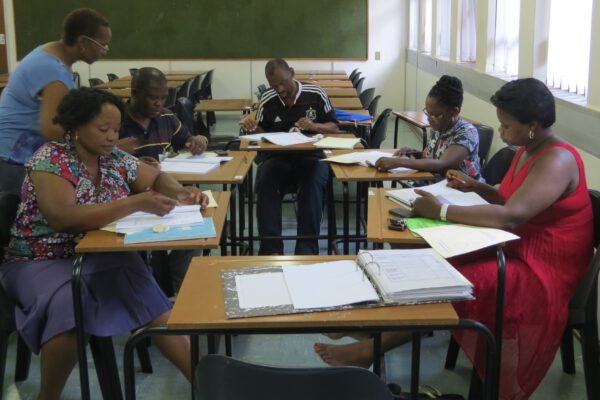8 Tips for Establishing Successful International Higher Education Partnerships
Terra Dotta’s July article, “Creating Global Partnerships,” offers tips for establishing successful international relationships from the experts—including Heather Ward, associate director of ACE’s Center for Internationalization and Global Engagement.
Ward, along with Tim Barnes of the University of Illinois at Urbana-Champaign and Dale LaFleur of the University of Arizona, presents advice on staffing, reciprocal relationships, and being flexible while forming new relationships.
Those tips have been reprinted below—and find the full article here.
8 Tips for Establishing Partnerships
If you’re considering international partnerships with educational institutions, consider the following advice:
Understand the partnership landscape—“Before you start working on your portfolio, you’ve got to collect information and understand where your university currently stands,” says Barnes. He spent his first few years at the University of Illinois reviewing all the historical agreements and talking to faculty about which ones have lasted and why.
Hire a dedicated staff person—“Along with the growth in volume and complexity of partnerships has come the need to support that with a professional role,” says Ward. About 30 percent of the respondents in ACE’s Mapping study indicated that they employ a staff member whose primary responsibility is developing and managing international partnerships.
Keep your campus in the know—“My biggest piece of advice is to actively communicate with your faculty and researchers on campus,” says LaFleur. Make sure they know about existing partnerships and how to work with you to expand them or add new ones. Barnes creates an annual presentation on the University of Illinois’ partnership portfolio that he shares with departments, deans, provosts and other stakeholders. He also maintains detailed information in a self created database so he can let an environmental engineering professor know where Illinois has partnerships related to clean water projects, for example.
Involve the faculty—“To make these relationships truly faculty-driven, you’ve got to establish an international advisory committee across your campus to provide an effective way for faculty to come forward and contribute to your goals,” says Barnes. Participants will vary depending on your institution, but they should include several faculty members who are international champions, such as those who lead study abroad programs.

Look for mutually beneficial partnerships—“Both institutions need to get value from the arrangement,” says Ward. “How you measure that value can be different, but you need to articulate it so that everyone is clear on the expectations.” If your sole reason for the alliance is to attract students from the partner country who will pay full tuition at your university, for example, then it’s not a reciprocal relationship.
Tie your goals to larger institutional ones— “To be strategic about your partnerships, you must have some overall internationalization plan and it should tie into even broader institutional goals,” says Barnes. For example, if your university strives to be a leader in developing aerospace engineers for regional aircraft, then your international partnerships should focus on that as well.
Build multidimensional relationships—Focus on a handful of universities with which you can create strategic partnerships. For instance, the University of Arizona and the Universidad Nacional Autónoma de Mexico have been partners since 1980. Together, they have pursued multiple academic and research projects, including dual degrees in engineering and a binational consortium to research arid-lands issues facing the southwest and Mexico. The consortium is supported by funding from Mexico’s National Council for Science and Technology, also known as CONACyT. In the last two years, dedicated offices were established on each university’s campuses.
Allow for new opportunities to bubble up—While it’s important to have a partnership strategy—and to invest time and resources in managing partnerships that have proven successful—there should still be room for new relationships to form. “You don’t want to squelch faculty members’ enthusiasm for making international connections,” says Ward.
If you have any questions or comments about this blog post, please contact us.


